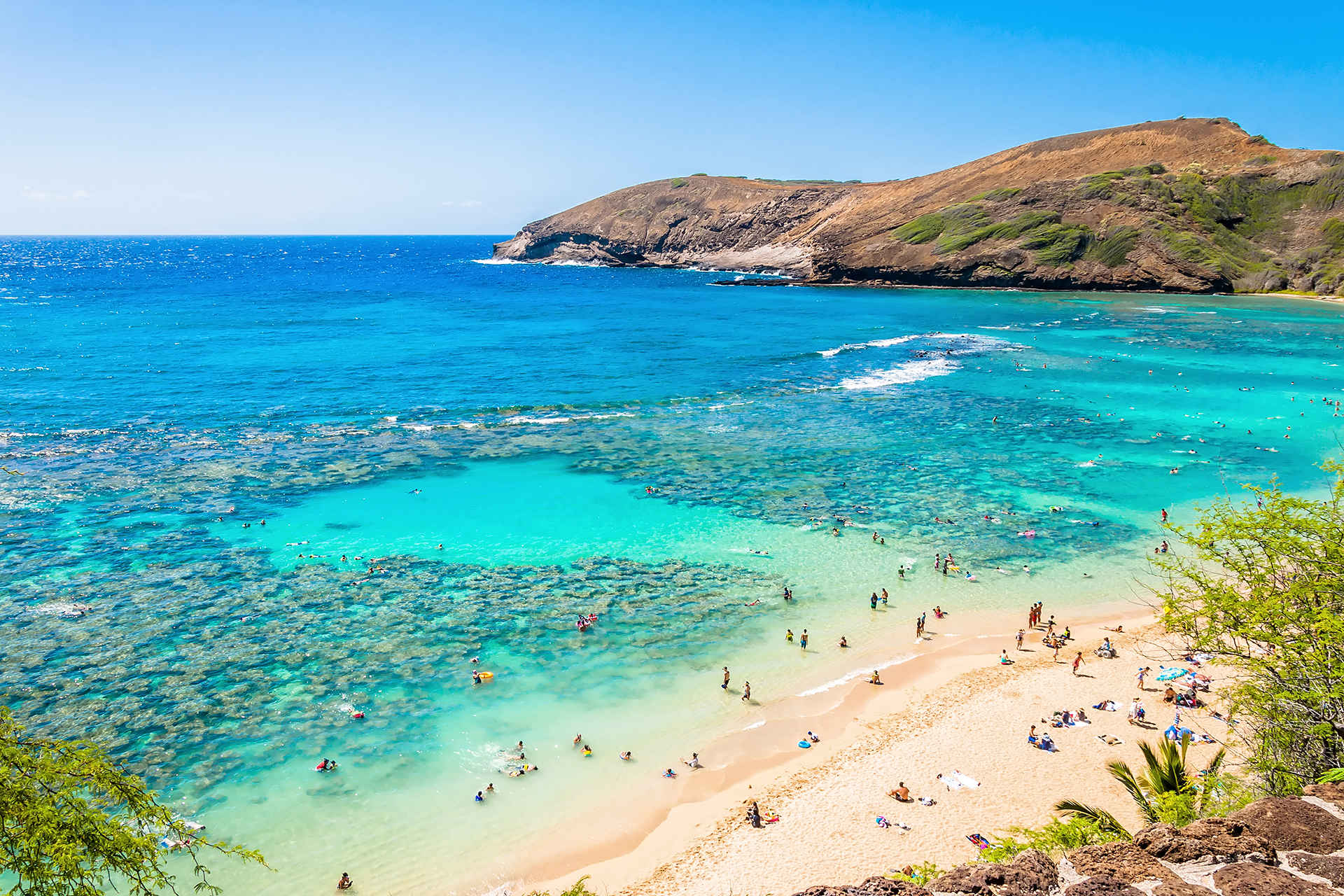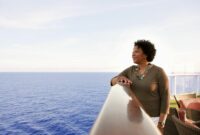Hawaiian tours for seniors offer a unique opportunity to experience the beauty and culture of Hawaii at a relaxed pace. This guide explores various tour options tailored to the needs and preferences of older travelers, considering factors like accessibility, health, and budget. We’ll delve into the diverse landscapes of the islands, highlighting destinations and activities suitable for seniors seeking a memorable and comfortable vacation.
From slow-paced walking tours to wheelchair-accessible cruises, we’ll examine the benefits and drawbacks of different tour styles. We’ll also address important considerations such as health and safety, providing practical advice and resources to ensure a smooth and enjoyable trip. This includes budgeting tips, accommodation suggestions, and insights into creating personalized itineraries that cater to individual needs and preferences.
Types of Hawaiian Tours Suitable for Seniors
Planning a Hawaiian vacation for seniors requires careful consideration of their mobility and interests. Choosing the right tour type is crucial for ensuring a comfortable and enjoyable experience. This section details various tour options designed with senior travelers in mind, highlighting their accessibility features and price ranges.
Hawaiian Tour Options for Seniors
Selecting the ideal Hawaiian tour for seniors depends on individual preferences and physical capabilities. Several options cater to different needs and interests, ensuring a memorable trip for everyone.
| Tour Type | Description | Accessibility Features | Average Price Range |
|---|---|---|---|
| Slow-Paced Walking Tours | Focus on smaller areas, allowing ample time for exploration and rest. Often incorporate historical and cultural insights. | Generally suitable for those with good mobility; may offer shorter routes or rest stops. Wheelchair accessibility varies greatly depending on the specific tour and location. | $75 – $150 per person |
| Wheelchair-Accessible Bus Tours | Cover larger areas, offering a comfortable and convenient way to see multiple sights. Narrated tours provide historical and cultural context. | Features wheelchair ramps, lifts, and designated seating. Check with tour operators to confirm specific accessibility features. | $100 – $200 per person |
| Luxury Cruises | Offer a relaxed pace, with minimal walking required. Enjoy stunning coastal views and onboard amenities. | Most cruise ships have accessible cabins and facilities. However, always verify accessibility details with the cruise line. | $500 – $2000+ per person (depending on duration and cabin type) |
| Small Group Tours | Provide a more personalized experience with fewer crowds and more attention from guides. Often cater to specific interests, like history or nature. | Accessibility varies based on the tour and activity. Inquire about accessibility features when booking. | $150 – $300 per person |
Comparison of Tour Styles for Seniors
Each tour style presents unique advantages and disadvantages for senior travelers. Slow-paced walking tours offer intimate experiences but might be tiring for those with limited mobility. Bus tours provide wider coverage but lack the immersive quality of walking tours. Cruises offer relaxation and comfort but can be expensive. Small group tours balance personalization and convenience but may require some physical exertion depending on the activities. The optimal choice hinges on the senior’s physical capabilities and preferred travel style.
Island Suitability for Senior Travelers
The Hawaiian Islands offer diverse landscapes and activities. Maui and Oahu provide a good balance of accessible attractions and vibrant culture. Kauai, with its lush landscapes, may present more challenging terrain for seniors with mobility issues. Lanai and Molokai offer quieter experiences, but accessibility varies depending on specific activities and locations. Careful consideration of the island’s terrain and available activities is essential for ensuring a comfortable and enjoyable trip for senior travelers. For instance, Oahu offers many flat, paved areas perfect for wheelchair users, while Kauai’s rugged coastline may be less accessible.
Health and Safety Aspects of Hawaiian Tours for Seniors
Planning a Hawaiian vacation for seniors requires careful consideration of health and safety. The tropical climate, coupled with the potential for physical activity during tours, necessitates proactive measures to ensure a comfortable and secure experience. This section outlines crucial safety precautions and resources to help senior travelers enjoy their Hawaiian adventure without unnecessary risks.
Safety Precautions and Recommendations for Senior Travelers in Hawaii
The Hawaiian climate presents unique challenges for seniors. High temperatures and intense sun exposure can lead to heat exhaustion or heat stroke, particularly for those with pre-existing health conditions. Therefore, it is vital to prioritize sun protection. This includes wearing lightweight, light-colored clothing, wide-brimmed hats, and sunglasses. Regular application of high SPF sunscreen is also crucial, even on cloudy days. Staying hydrated is paramount; seniors should drink plenty of water throughout the day, even before feeling thirsty. Planning activities for cooler parts of the day, such as early mornings or late afternoons, can significantly reduce the risk of heat-related illnesses. Pace yourselves and take frequent breaks in shaded areas. Consider carrying a small, portable fan for additional cooling. Finally, be mindful of uneven terrain and slippery surfaces, particularly when participating in outdoor activities. Appropriate footwear and the use of walking sticks or canes, if needed, are highly recommended.
Travel Insurance Options for Senior Travelers
Securing comprehensive travel insurance is strongly recommended for senior travelers. Standard travel insurance policies may not adequately cover all potential health issues or emergency situations faced by older adults. Specialized senior travel insurance plans often provide broader coverage, including medical evacuation, repatriation, and extended hospital stays. It is essential to carefully review policy details, paying close attention to pre-existing condition clauses and coverage limits. Many reputable insurance providers offer tailored plans for senior citizens, and comparing several options is advisable before making a purchase. Consider factors such as the duration of your trip, planned activities, and your individual health needs when selecting a policy. For example, a policy covering medical evacuation is crucial if you’re planning a remote hike or an activity involving water sports. A higher coverage limit may be necessary for individuals with pre-existing conditions.
Managing Potential Health Emergencies During a Tour
While thorough planning minimizes risks, it’s crucial to have a strategy in place for managing potential health emergencies. Before departure, inform your tour operator and travel companions of any pre-existing medical conditions and necessary medications. Carry a comprehensive medical information card, including a list of allergies, medications, and emergency contact details. Pack a well-stocked first-aid kit containing essential supplies, such as bandages, antiseptic wipes, pain relievers, and any personal medications. Familiarize yourself with the location of the nearest hospital or medical clinic. Pre-arranging transportation to medical facilities can save valuable time in an emergency. Consider carrying a medical alert bracelet or necklace clearly indicating any relevant medical information. If you have a chronic condition like heart disease or diabetes, ensure you have sufficient medication for the duration of your trip, plus extra in case of delays. If you are using any assistive devices like oxygen tanks, make sure you have adequate supplies and arrange for their transport.
Illustrative Examples of Senior-Friendly Hawaiian Tours
Choosing the right Hawaiian tour for seniors requires careful consideration of pace, accessibility, and activities. The following itineraries showcase diverse experiences tailored to the needs and preferences of older travelers, emphasizing relaxation, cultural immersion, and manageable activity levels. Each itinerary prioritizes comfort and minimizes strenuous physical exertion.
Maui’s Gentle Wonders: A Relaxed Island Escape
This five-day itinerary focuses on Maui’s breathtaking landscapes and rich culture, prioritizing relaxation and gentle exploration. The slower pace allows ample time for enjoying the scenery and absorbing the island’s unique charm.
Day 1: Arrival in Kahului and transfer to a tranquil resort in Wailea. Spend the afternoon relaxing by the pool or beach, enjoying the gentle ocean breeze and stunning sunset views. The resort offers accessible facilities and amenities designed for comfort and convenience.
Day 2: A gentle drive along the scenic Road to Hana, stopping at easily accessible viewpoints like Twin Falls and Waimoku Falls (consider a shorter version of the Road to Hana, omitting some of the more challenging sections). Enjoy the lush rainforests, cascading waterfalls, and panoramic ocean vistas. Lunch will be at a restaurant with accessible seating.
Day 3: Explore the charming town of Paia, browsing local shops and art galleries. Enjoy a leisurely lunch at a seaside café, savoring fresh seafood and the calming ocean sounds. In the afternoon, participate in a gentle lei-making workshop, learning about Hawaiian floral traditions. The workshop is held in a comfortable, air-conditioned setting.
Day 4: Visit the Maui Ocean Center, exploring the diverse marine life in a climate-controlled environment. This provides a fascinating and accessible way to experience the island’s underwater world without strenuous activity. In the afternoon, enjoy a relaxing spa treatment at the resort.
Day 5: Departure from Kahului Airport.
Oahu’s History and Heritage: A Cultural Journey
This four-day itinerary focuses on Oahu’s historical significance and cultural richness, offering a blend of historical sites and gentle activities. The itinerary prioritizes accessible locations and manageable walking distances.
Day 1: Arrive at Honolulu International Airport and transfer to a centrally located hotel with accessible rooms and amenities. Spend the afternoon exploring Waikiki Beach, enjoying the gentle ocean waves and iconic Diamond Head views from a comfortable distance.
Day 2: Visit Pearl Harbor, reflecting on the historical significance of this site. Utilize the readily available accessible transportation and facilities within the Pearl Harbor complex. The afternoon will be spent at the Polynesian Cultural Center, experiencing the diverse cultures of Polynesia through captivating performances and exhibits. The Center offers accessible pathways and seating.
Day 3: Explore historic Honolulu, visiting Iolani Palace (allowing ample time for rest and utilizing accessible entrances) and Kawaiahao Church. Enjoy a traditional Hawaiian lunch at a local restaurant with accessible seating. The afternoon can be spent at the Honolulu Museum of Art, admiring the diverse collection of artwork.
Day 4: Enjoy a final leisurely breakfast before transferring to Honolulu International Airport for departure.
Kauai’s Natural Beauty: A Scenic Relaxation
This six-day itinerary focuses on Kauai’s stunning natural beauty, emphasizing scenic drives and gentle activities. The itinerary incorporates accessible viewpoints and minimizes strenuous hikes.
Day 1: Arrive at Lihue Airport and transfer to a resort in Poipu, known for its calm beaches and accessible amenities. Spend the afternoon relaxing on the beach, enjoying the warm sun and gentle waves.
Day 2: Enjoy a scenic drive along the south shore, stopping at easily accessible viewpoints to admire the dramatic cliffs and coastline. Consider a boat tour along the Na Pali Coast, offering breathtaking views of the coastline without requiring strenuous physical activity. Many tour operators provide accessible boats and assistance.
Day 3: Visit the Wailua River State Park, enjoying a leisurely boat ride up the river to the Fern Grotto (choose a boat tour that accommodates seniors’ needs). The afternoon can be spent exploring the charming town of Kapaa.
Day 4: Take a scenic drive to the north shore, stopping at viewpoints like Hanalei Bay and Ke’e Beach (consider only easily accessible areas). Enjoy the stunning views and the peaceful atmosphere.
Day 5: Relax at the resort, enjoying the amenities and the beautiful surroundings. Consider a gentle massage or spa treatment.
Day 6: Departure from Lihue Airport.
End of Discussion
Planning a Hawaiian vacation as a senior doesn’t have to be daunting. With careful planning and consideration of individual needs, a trip to Hawaii can be a truly enriching and unforgettable experience. By exploring the various tour options, prioritizing accessibility, and understanding the importance of health and safety, seniors can embark on a journey filled with breathtaking scenery, vibrant culture, and lasting memories. This guide provides the tools and information necessary to make your dream Hawaiian getaway a reality.




